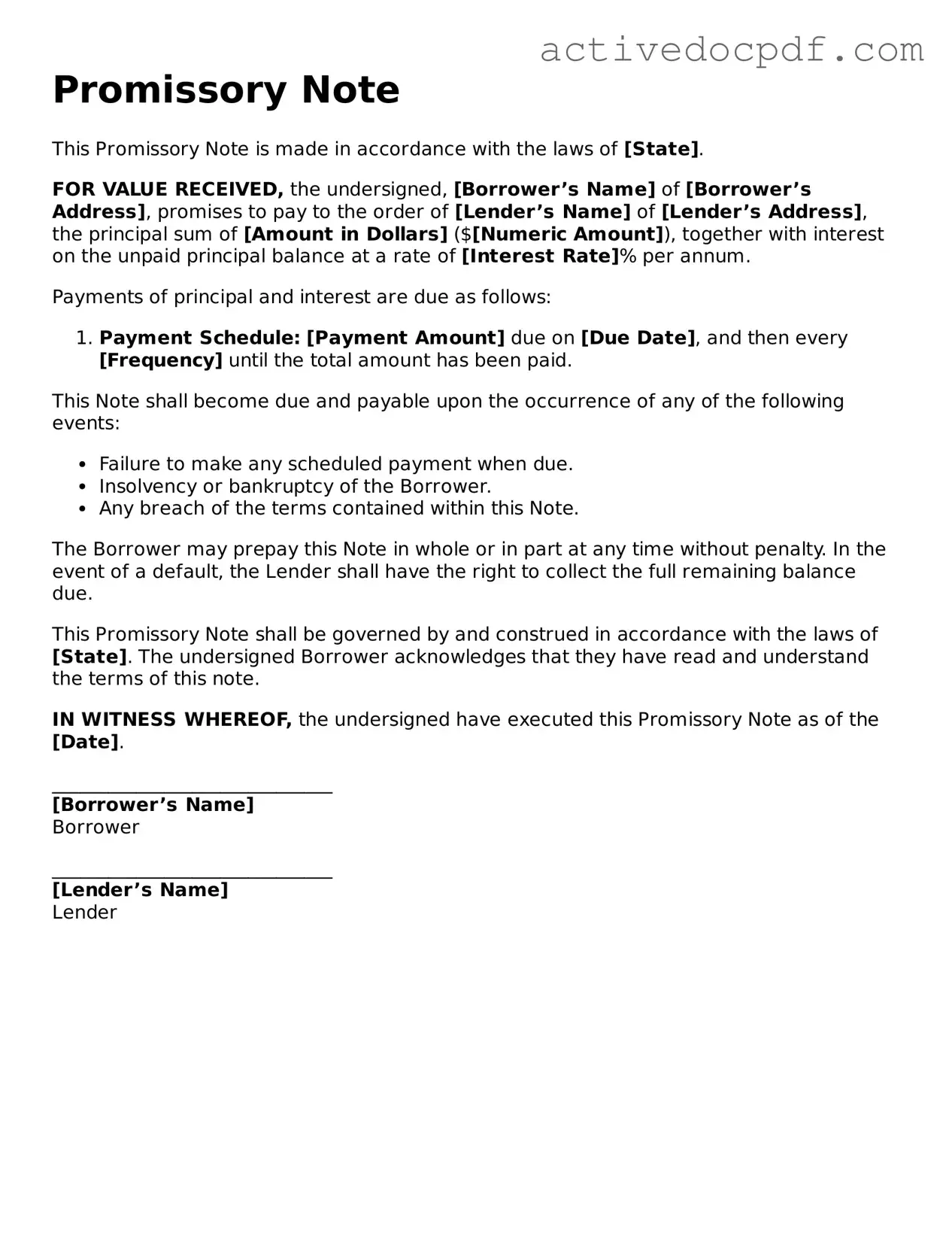What is a Promissory Note?
A promissory note is a written promise to pay a specific amount of money to a designated person or entity at a defined future date or on demand. It serves as a legal document that outlines the terms of the loan, including the principal amount, interest rate, repayment schedule, and any penalties for late payment.
Who uses a Promissory Note?
Promissory notes are commonly used by individuals, businesses, and financial institutions. They may be utilized in various situations, such as:
-
Personal loans between friends or family members
-
Business loans for startups or existing companies
-
Real estate transactions
-
Student loans
What are the key components of a Promissory Note?
A well-drafted promissory note typically includes the following elements:
-
The names and addresses of the borrower and lender
-
The principal amount borrowed
-
The interest rate, if applicable
-
The repayment schedule and due dates
-
Any late fees or penalties for missed payments
-
Signatures of both parties
Is a Promissory Note legally binding?
Yes, a promissory note is a legally binding document as long as it meets certain criteria. It must be signed by the borrower and lender, and it should clearly outline the terms of the agreement. If either party fails to uphold their end of the agreement, the other party may have legal grounds to seek enforcement or recovery of the owed amount.
Can a Promissory Note be modified?
Yes, a promissory note can be modified if both the borrower and lender agree to the changes. It is advisable to document any modifications in writing and have both parties sign the revised note. This helps prevent misunderstandings and provides a clear record of the new terms.
What happens if a borrower defaults on a Promissory Note?
If a borrower defaults, meaning they fail to make payments as agreed, the lender has several options. They may:
-
Contact the borrower to discuss the situation
-
Charge late fees as specified in the note
-
Seek legal action to recover the owed amount
-
Report the default to credit bureaus, affecting the borrower's credit score
Do I need a lawyer to create a Promissory Note?
While it is not legally required to have a lawyer draft a promissory note, consulting with one can be beneficial. A lawyer can ensure that the document complies with state laws and adequately protects both parties’ interests. For simple loans, templates are often available online, but customization may be necessary to fit specific needs.
Where can I find a Promissory Note template?
Promissory note templates can be found in various places, including:
-
Legal websites that provide free or paid templates
-
Office supply stores that sell legal forms
-
Online document creation tools
When using a template, ensure it is suitable for your specific situation and jurisdiction.
